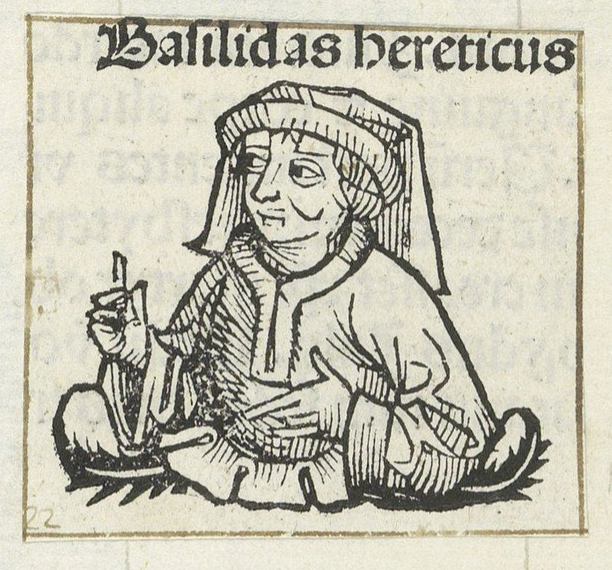
Basilides was a second century AD early Christian Gnostic teacher known first and foremost through the antagonistic writings of Church Fathers like Irenaeus of Lyons, Eusebius of Caesarea, St. Clement of Alexandria, St. Hippolytus of Rome, St. Epiphanius of Salamis, and Theodoret of Cyrus. These Church Fathers attempted — and in their eyes, successfully — to refute Basilides’ ‘Gnostic’ doctrines. Besides a ‘Gnostic’ (a label devised by the Church Father Irenaeus), Basilides was also one of the first Gospel commentators. His Exegetica, now lost, existed of at least two dozen books on the Christian Gospel.
Of Basilides’ own works only fragments remain — labelled A to H – such as The Octet of Subsistent Entities (Fragment A), Human Suffering and the Goodness of Providence (Fragment G), and Forgivable Sins (Fragment H).
Because of these scarce insights into ‘Basilidean’ Gnosticism, most of our knowledge of its doctrine is derived from its enemies and therefore must be taken with a grain of salt here and there. Basilides’ doctrine establishes a plethora of distinct ideas not found elsewhere in Gnostic literature. For example, he attributed certain time periods (epochs) to certain Archons, the traditional evil ‘Rulers’ of the material world that were perceived by ‘mainstream’ Christianity to be the heavenly angels of God. In addition, Basilides echoes the traditional Gnostic antipathy to the material world through his interpretation of redemption, but the form thereof is different. According to him, redemption may be achieved through a complete return to ‘primal chaos’, in which no imperfection exists because no matter exists. The spirit of mankind would then return to the Absolute Divinity, beyond existence.
Simultaneously, Basilides’ writings adhere to the same Christian language and debate the same scriptures as other Gnostic theologians, like Valentinus. But his interpretation depends on mostly Platonic or Pythagorean ideas.
Basilides also propagated the belief that sin is inherent to all living beings, including Jesus Christ. This was a belief that could not be accepted by such figures as the Church Fathers, who continuously stumbled over Basilides’ interpretation of sin and evil.1
Basilides taught in Alexandria and was himself taught by either Menander (first century AD) or an alleged pupil of the Apostle Paul called Glaucias, according to Eusebius. The Basilidean effort persisted until the fourth century. It is likely that it was subsumed by other Gnostic sects.
Basilides’ has had a lasting impact on the diverse academic field of Gnosticism and has inspired such persons as Carl Gustav Jung (1875-1961), who attributed his Seven Sermons to the Dead to Basilides.
Douglas, Stuart. “The Seven Sermons to the Dead,” in: White Bird, Black Serpent, Red Book: Exploring the Gnostic Roots of Jungian Psychology through Dreamwork (London: Routledge, 2019): 41-152.
Layton, Bentley (David Brakke ed.). The Gnostic Scriptures (New Haven: Yale University Press, 2021).
Schaff, Philip and Henry Wace eds. Nicene and Post-Nicene Fathers of the Christian Church: Series II, Volume I (Peabody, Massachusetts: Hendrickson Publishers Inc., 1995).
Ibid.: 631-632.↩︎